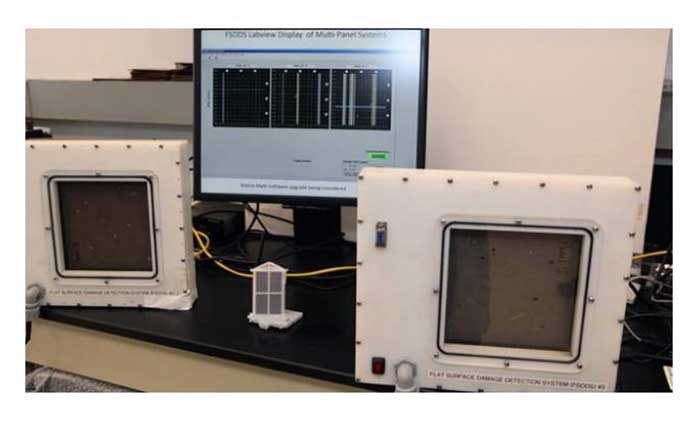Nasa scientists are developing a system that mimics as sensory skin. This new sensory skin could help astronauts to know exactly when the outside of their spacecraft is actually damaged. Scientists named this system as ‘Flexible Damage Detection System’ technology. As scientists noted, this system could figure out a possible solution to Nasa’s problem in real-time where a spacecraft is damaged and how seriously.
Research head, Martha Williams said, “I kind of look at it like a sensory skin. It’s a sensory system that tells us where we are damaged and the level of intensity.”
The system uses a series of several technologies to create circuits printed on thin layers. It also can be embedded in a spacecraft’s structure.
Micrometeoroids and orbital debris pose threats to spacecraft as they travel at high speeds of 17,500 mph or 28,000 km per hour in low-Earth orbit, and at over 24,000 mph or 38,400 kmph on trips to the Moon and deep space. As space shuttle windows revealed, something as small as a paint chip moving at that velocity can punch through several layers of glass.
It involves efficient manufacturing methods to easily transfer product to commercial companies for potential use. Currently, the sensory panel is the size of 6 by 6 inches connected to wiring and a computer that monitors the system.
If something pierces a spacecraft’s hull, or the first layer or two there are very limited ways for astronauts aboard a spacecraft to know there might be damage. An impact that goes all the way through and causes a leak would set off alarms, but otherwise the current methods to detect damage require either a camera inspection or a spacewalking astronaut. Nor is there a precise way to pinpoint exactly in real-time where the damage occurred if not visible to the eye or camera so that astronauts can assess it.
Depending on the approach, a spacecraft could have a detection layer wrapping it completely, or just covering a certain area over a particularly critical system.
Scientists said, “The damage detector could also be applied to the outside of a habitat on the lunar or Martian surface. It can calculate damage from small impacts. On Earth, the system could perhaps be applied to the outside of airplanes to tell pilots when their airframe has * been impacted and may be compromised.”
